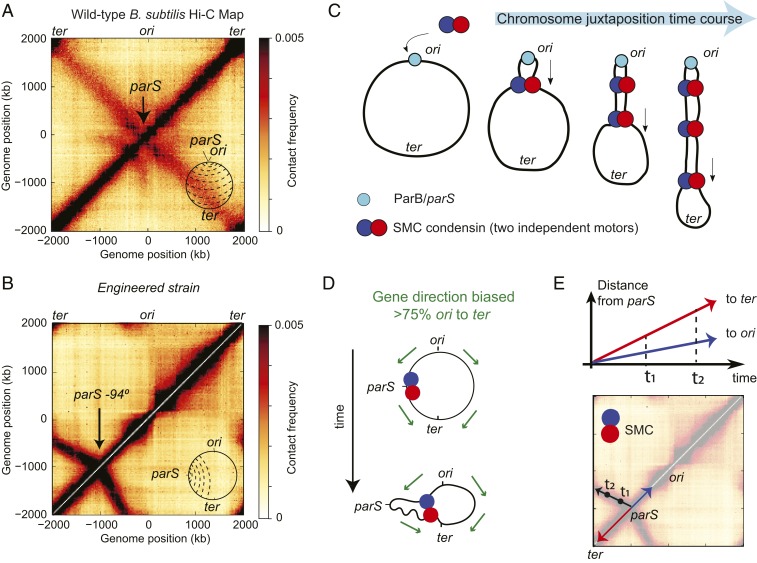Fig. 1.
The posited role of transcription in shaping asymmetric SMC translocation rates. (A) Hi-C map of a wild-type B. subtilis PY79. A, Inset depicts the juxtaposition of chromosome arms (dashed lines) centered on the ori to ter axis. (B) Hi-C map of a B. subtilis strain (see SI Appendix for strain tables) with a single parS site at −94° which has a secondary diagonal that points biasedly away from the ori. (C) Loop-extrusion model schematic depicting the active juxtaposition of chromosome arms performed by the B. subtilis condensin loop-extruding complex. (D) Gene directions point biasedly toward the ter (green arrows); for SMC motors translocating toward the ori (blue), there will be increased frequencies of head-on collisions with transcripts as compared to SMCs translocating toward the ter (red). (E) Interpretation of Hi-C: Condensin translocates bidirectionally from the parS site juxtaposing flanking DNA; motion toward the ter is faster than toward the ori, resulting in the asymmetric secondary diagonal.

